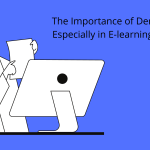Always Learning: 6 Ways to Become a Better Teacher
For most teachers, the ability to make a difference in their students’ lives is what educating is all about. However, reaching students is often more challenging than educators expect, with each child having unique needs and personalities. Even long-time teachers have to adjust their perspectives and techniques with each incoming class to ensure every student is able to thrive.
Fortunately, there are countless ways to improve as an educator and cultivate a space of learning, support, and trust. Keep reading to learn six practices for becoming a better teacher.
Table of Contents
Invest in your classroom
A sure-fire way to engage with students is by creating a class space that reflects your personality, energy, and love for teaching. Instead of sticking to traditional setups void of emotion or community, explore alternative layouts to encourage group work and invest in educational decor from providers like Sproutbrite.
Follow in your favorite teacher’s footsteps
Chances are, you can identify educators in your schooling that impacted and inspired you to pursue a career in teaching. Take time to look back on your favorite teachers, noticing any activities, traits, or lessons that grabbed your attention as a student, and integrate their techniques into your method.
Though you may need to tweak previous approaches to fit the mold of your specific class, you can gain invaluable insight into educating through seasoned educators.
Understand what students want in an educator
According to current research, most students react positively to traits like flexibility, fairness, and understanding, among many others. However, the most impactful teachers adjust their approaches with each student to maximize engagement.
Though personalizing each lesson may not be feasible, you can offer additional, tailored support on a one-on-one basis. By practicing approachability, encouragement, and respectfulness when interacting with students, you can create a safe environment for students to ask for help.
Plan independently
Though you may have a district or school-wide schedule to adhere to as a teacher, building an itinerary that fits your student’s needs should take priority. By integrating your own flow into the general curriculum, you can ensure each person understands foundational information without falling into a one-size-fits-ass trap.
Consider your classroom activities
Effective teaching, engaged students, and classroom management go hand in hand. Teachers are as effective as their lessons and their relationships with their students.
Each lesson needs a clear structure, leaving room for questions, group work, and subject-appropriate tangents. Though you may want to limit long-winded distractions, allowing students to veer off course now and again can encourage questions and further discussion.
Maintain a positive and respectful classroom culture
Respected educators make a special effort to thank students–both publicly and privately–for their contributions, good attitudes, and engagement. Ultimately, students want to feel valued just as teachers do, so spend time appreciating the work your class puts in.
Reflect on successes and failures
Think about your lessons and share successes and failures with fellow teachers. That way, you can gain valuable feedback and insight into their inner workings, leading you to new teaching pathways.
Though each class requires different tactics, collaborating with fellow educators enables you to build a stronger foundation for education. Plus, colleagues may see your failures in a different light, allowing you to turn errors into a learning experience.
Final thoughts
As you strive to improve your teaching abilities, remember to invest in your class space, learn from seasoned educators, and remain flexible to student needs. By tailoring your methods to each class and prioritizing one-on-one interaction, you can break down power dynamics and educational barriers and become a favorite teacher for future students.













